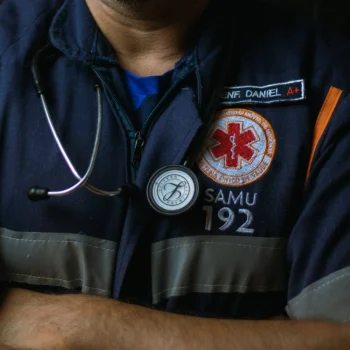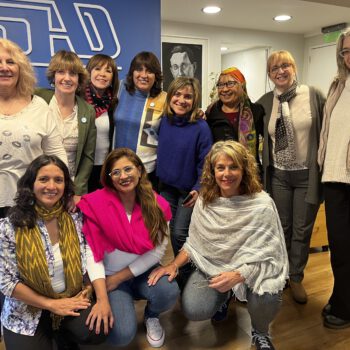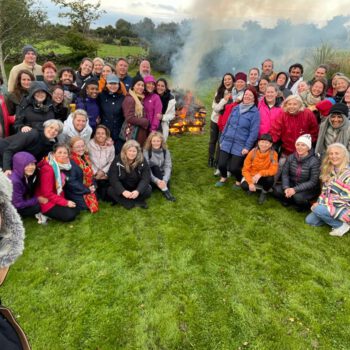Dorothy, my mom, used to spend many hours knitting or crocheting beautiful pieces of art. Mostly, she would create them for us, her children, and then as we got older, for her grandchildren. But she also delighted in making them for little people she would never even meet. She would busy her hands creating warmth for those in need, most often crafting beautiful, soft, newborn baby caps. She was a master at this, even as her hands grew more and more gnarled with age. Each time she created a cap, after finishing her stitching she would pause and examine her work, often pulling it apart to mend the parts that needed some more attention. Reflecting on this touching memory, I realise that life is not so dissimilar from those little knitted hats; a complex tapestry woven with moments of joy, love and connection, intertwined with threads of pain, shame and triggers. This intricate weave created by our life experiences, perceived in our minds and felt in our bodies, can at times unravel our sense of self, of well-being, revealing deep pain and shame, and offering a glimpse into what lies beneath our triggers. Compassionately leaning in towards these wounds can offer a glimmer of hope and understanding to those in pain.
What are triggers?
When considering a weapon, as articulated by Gabor Maté, it becomes clear that the trigger represents only a fraction of a larger mechanism. While we perceive a trigger as the catalyst for an explosive reaction, the truth lies in acknowledging that the reaction primarily stems from the coordinated efforts of the internal components of the weapon, rather than the trigger alone. Similarly, this principle extends to our understanding of emotional triggers.
These triggers can be diverse, ranging from input into any one of our five senses, to experiences; places or people which reveal unresolved wounds from our childhood. It is essential to acknowledge that being activated is not a sign of weakness but rather a cue that there is hidden (for a brilliant adaptive reason) pain and there is now a present moment healing opportunity. We’ve just found ourselves in a position where we can be curious! There is more power in being curious about what in us gets ignited than focusing on the trigger itself.
How do Triggers and Pain roll together?
Remember that brilliant adaptive reason above? When we as children experience pain, be it physical or emotional, we have the expectation that someone will be there to hold and nurture us through that pain. We need to be able to pull upon our caregivers regulated energy to learn how to regulate ours. We call this level of attunement ‘unconditional support’ and ‘coregulation.’ It is our birthright to be cared for in this way and it is in us to turn towards our caregivers to receive their support. But, what happens if they are unable to give that to us? What if they are not aware that we are experiencing pain? What if we expressed our pain and it fell on deaf ears? Experiencing this much pain on our own is too much for our young nervous systems to handle, and can feel like danger and a lack of safety. How do we then adapt? We develop coping mechanisms that craft a perceived sense of safety so we can continue to keep ourselves connected to our caregivers… Ever heard of anything more brilliant?! Maybe take a breath or two here and thank your young self for their brilliance.
A trigger reminds us physically or emotionally of pain that was too big to process on our own as children; one that we stifled or numbed so that we wouldn’t feel it fully. A trigger is what our bodies experience in response to a current stimulus but, the response is what exactly? Is it something wired into us? Can it be traced back to the past? Acknowledging that pain requires a level of vulnerability that is unavailable to us as a young one. Leaning into pain as an adult in the energetic embrace of a safe container (often a space we have created ourselves) can allow us to sit in the discomfort of the pain… Letting the emotions and pain arise so that we can start to dismantle the barriers that have been keeping us from living authentically.
Where does Shame fit in?
Shame is a pervasive emotion that thrives on secrecy and judgement. Shame is the ego’s ultimate protector, tasked with the job of keeping us ‘in line’ and accepted by our group. The belief at the core of shame is that “What I am concealing about myself is so awful, that if anyone found out, I would be banished and abandoned”. When we start to look at pain that was so awful that we felt we had to stifle it or hide it, shame activates in us, wanting us to keep it (the ‘awful thing’) safely locked away, so no one knows we’re broken, so they don’t leave us. The fear of judgement and rejection can further deepen these emotional wounds, creating a cycle that seems insurmountable. Turning towards your shame with love, offering a voice to pain and simply noticing your triggers involves dismantling the false narratives that we’ve internalised as truth. This work can only be done in the presence of safety that we, as adults, co-create with ourselves and a team that we build around us to support us. Traversing this healing journey is a masterclass in courage, self-discovery, resilience and compassion. It is through this compassion for both ourselves and others that we move towards a more authentic life.
By examining our limiting beliefs about who we are, we have the chance to get curious about what ignites us, then we can circle back and edit our story. It’s as though we’re going back in time and unwrapping those stitches in our tapestry that need some more attention, that perhaps got tangled up in what was going on or even skipped altogether. Perhaps we chose to pull apart and restitch, or leave the stitch as is and admire how it’s adjusted the pattern of the cloth. Or perhaps we even restitch it without taking the whole piece apart. In writing this piece I now see the wisdom with which my Mom navigated this seemingly simple act of creating warmth for those around her, into a lesson for me. I also now see that, just like her, I can choose to go back and “Pick up the dropped stitch”.




Comments are closed.